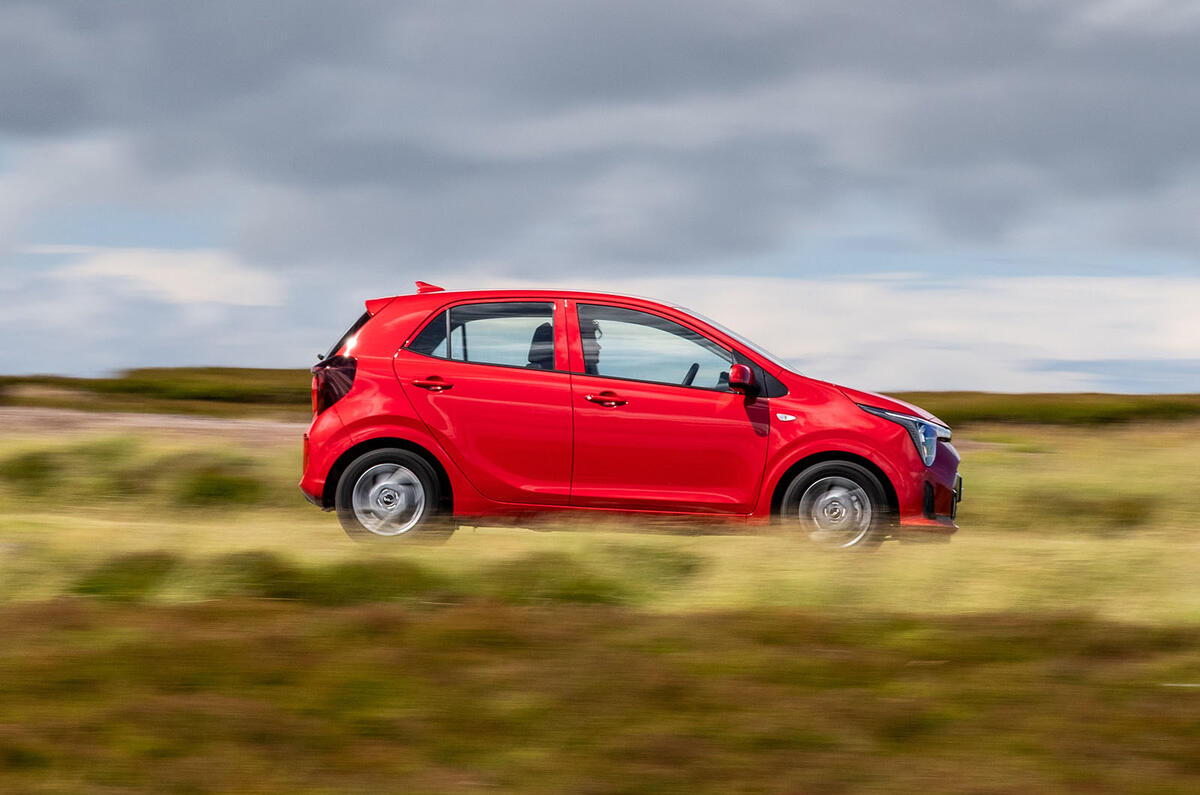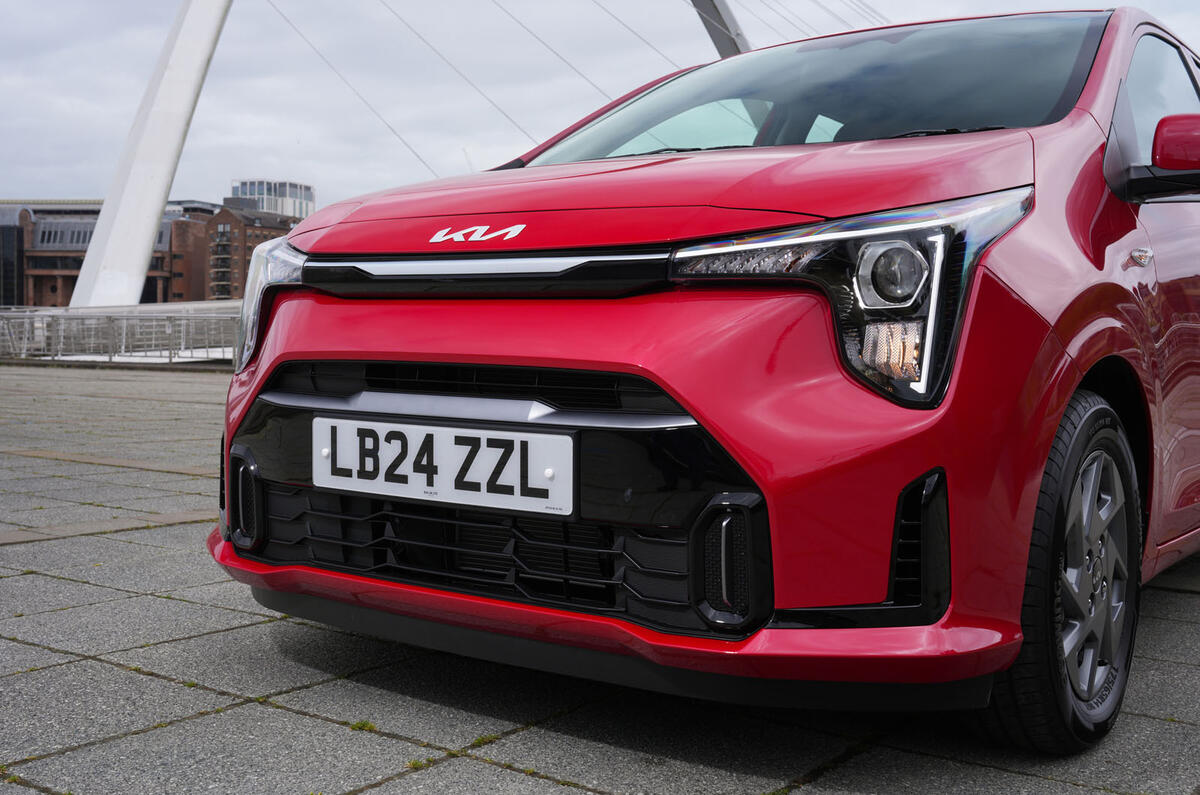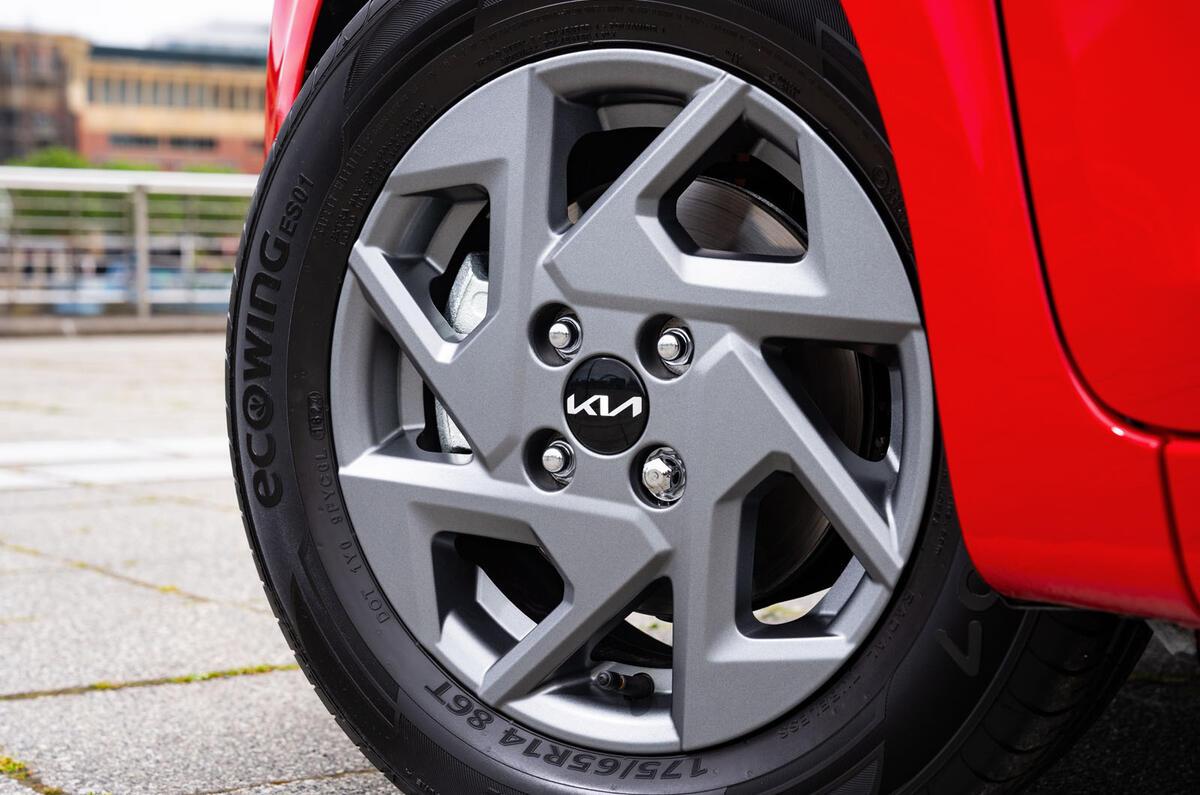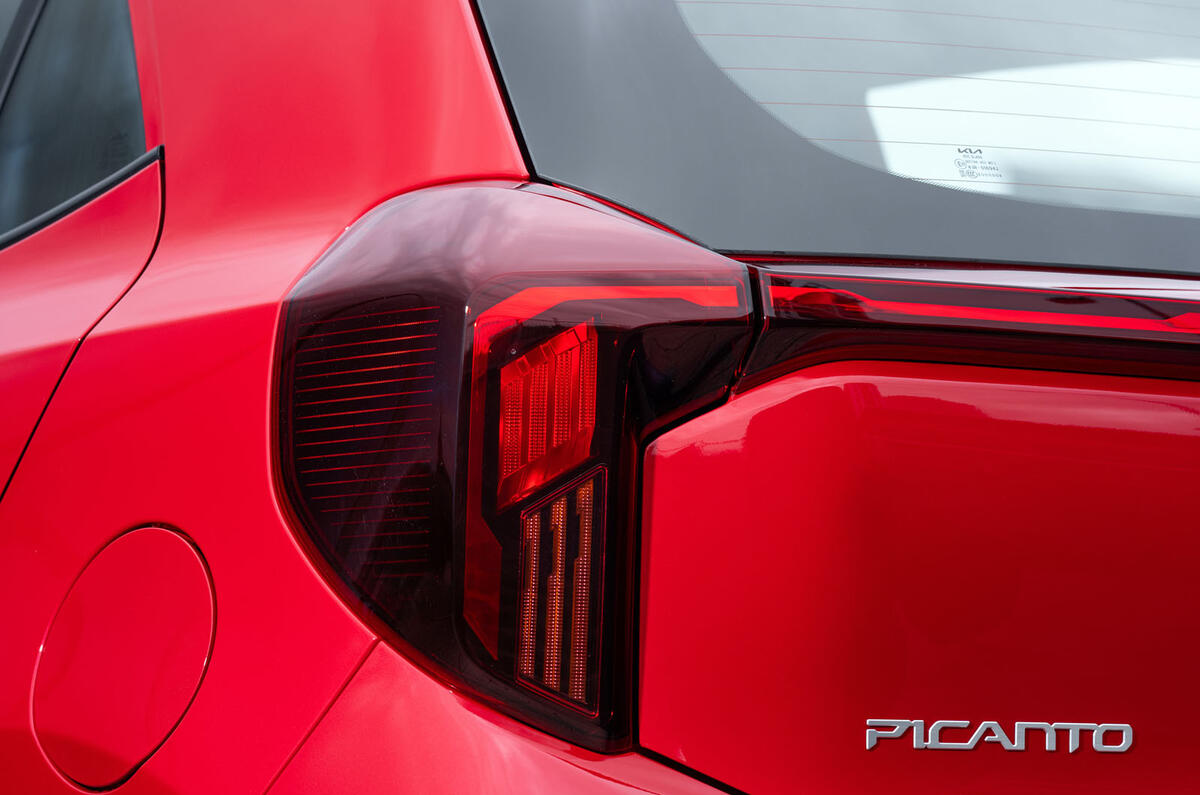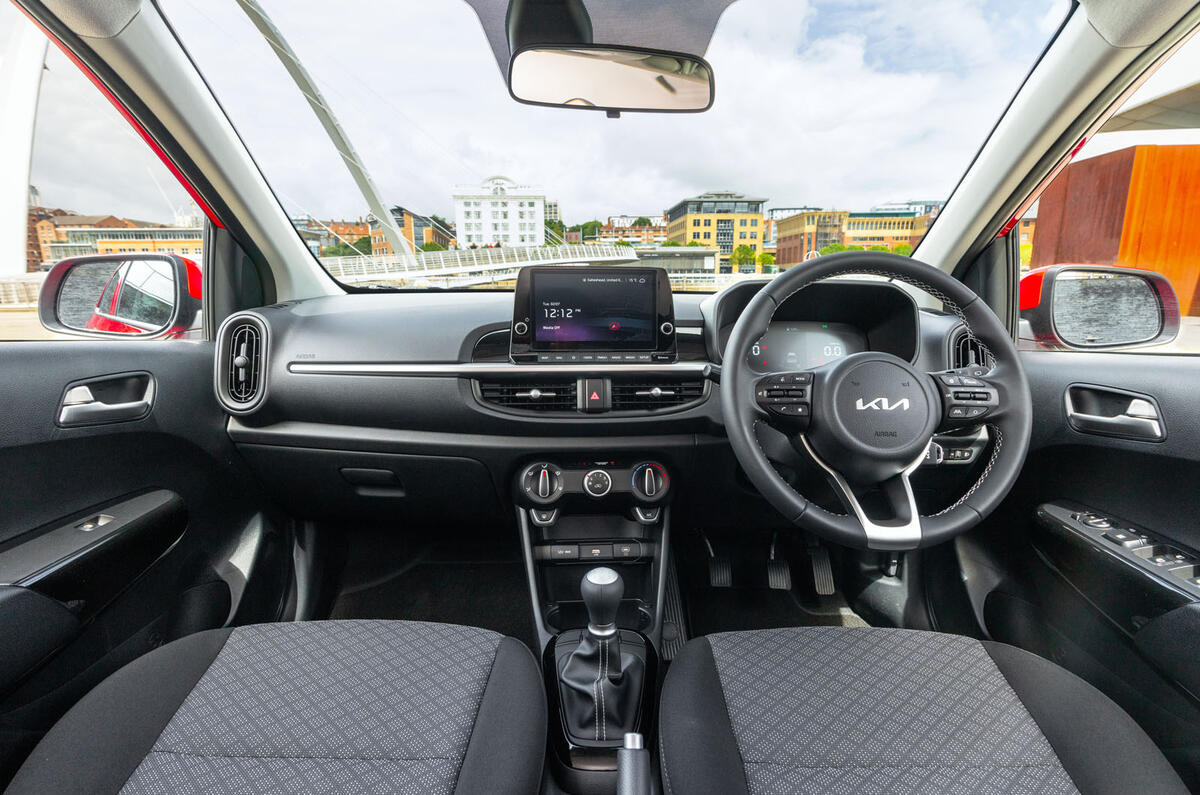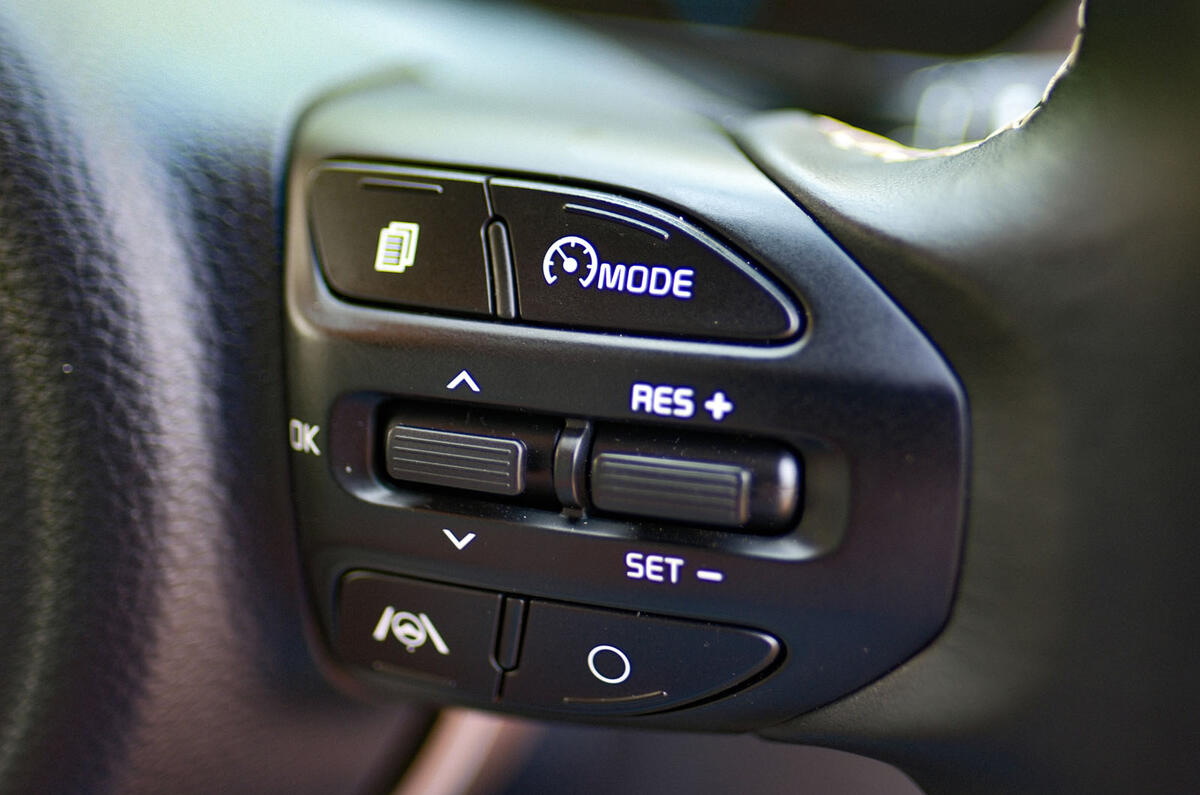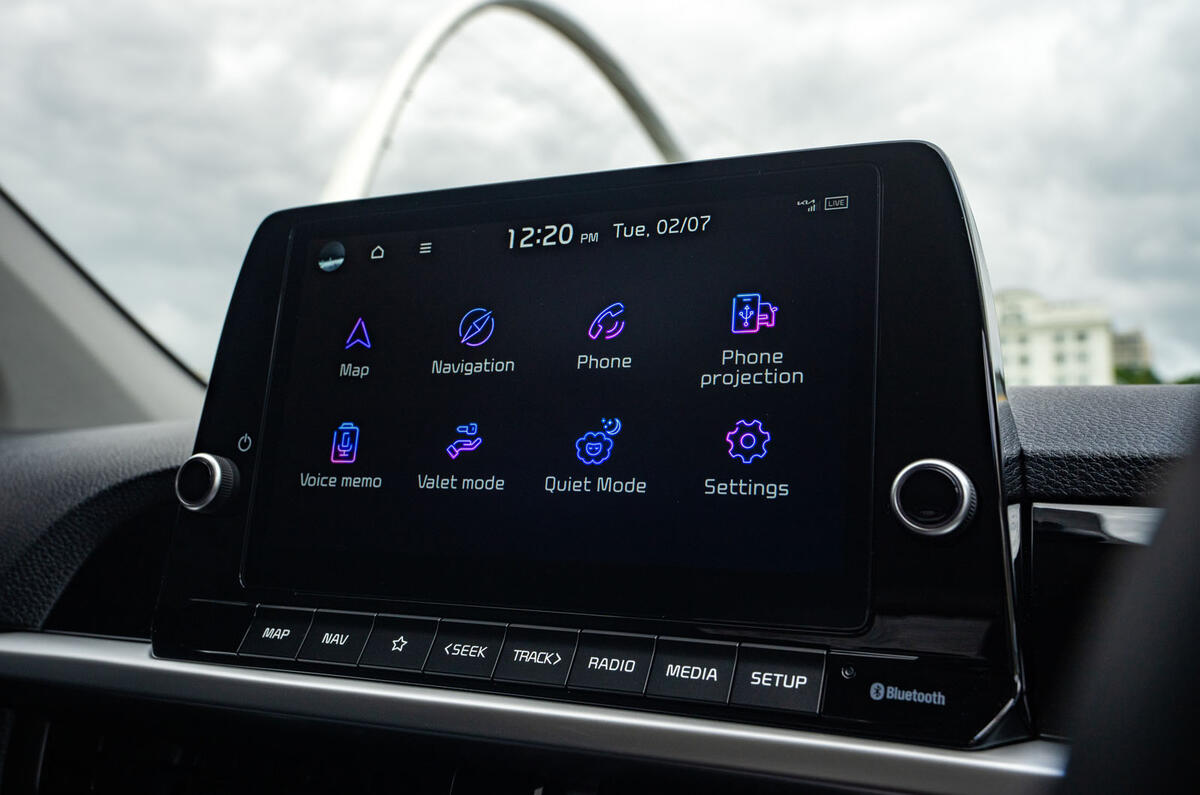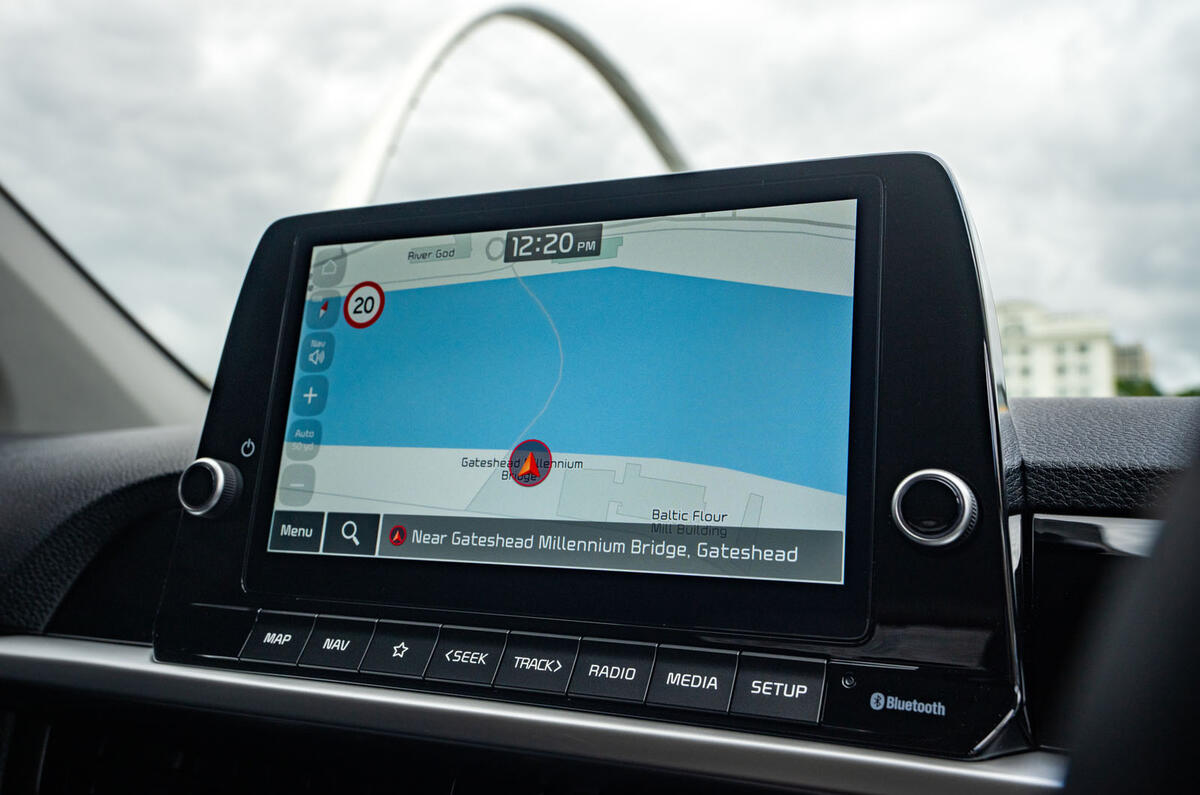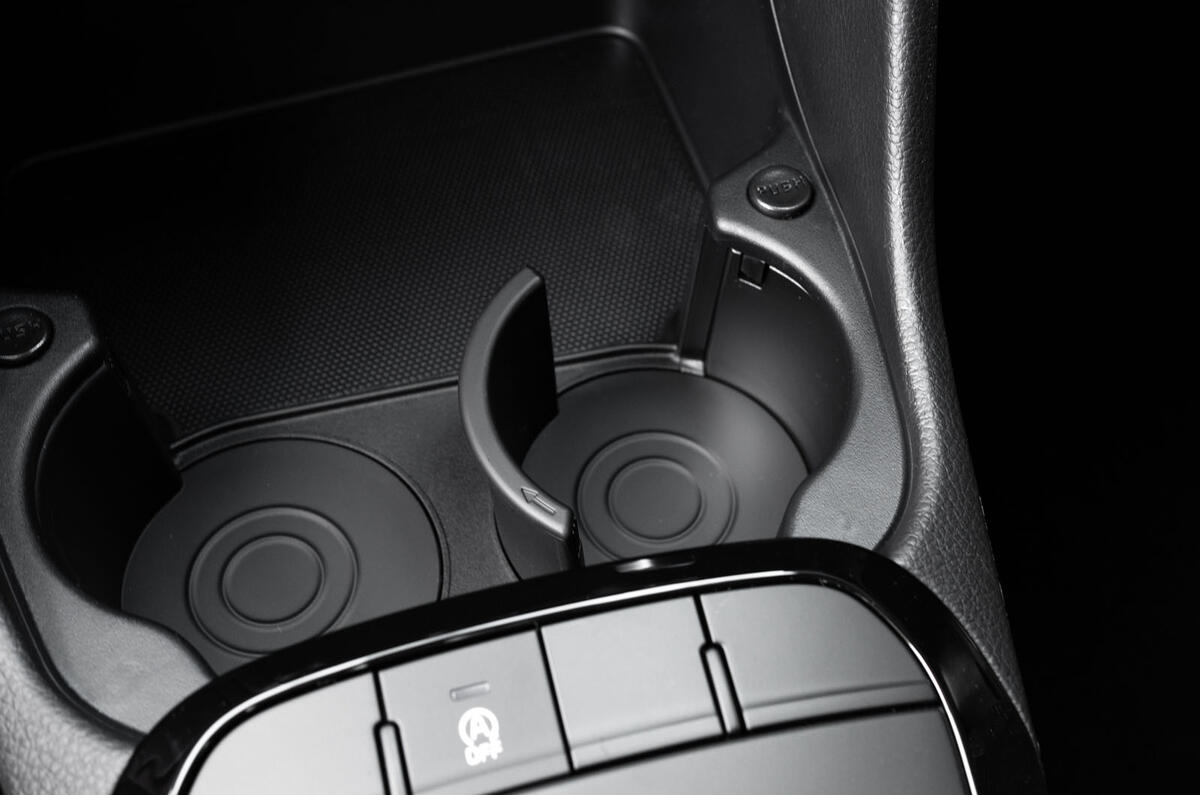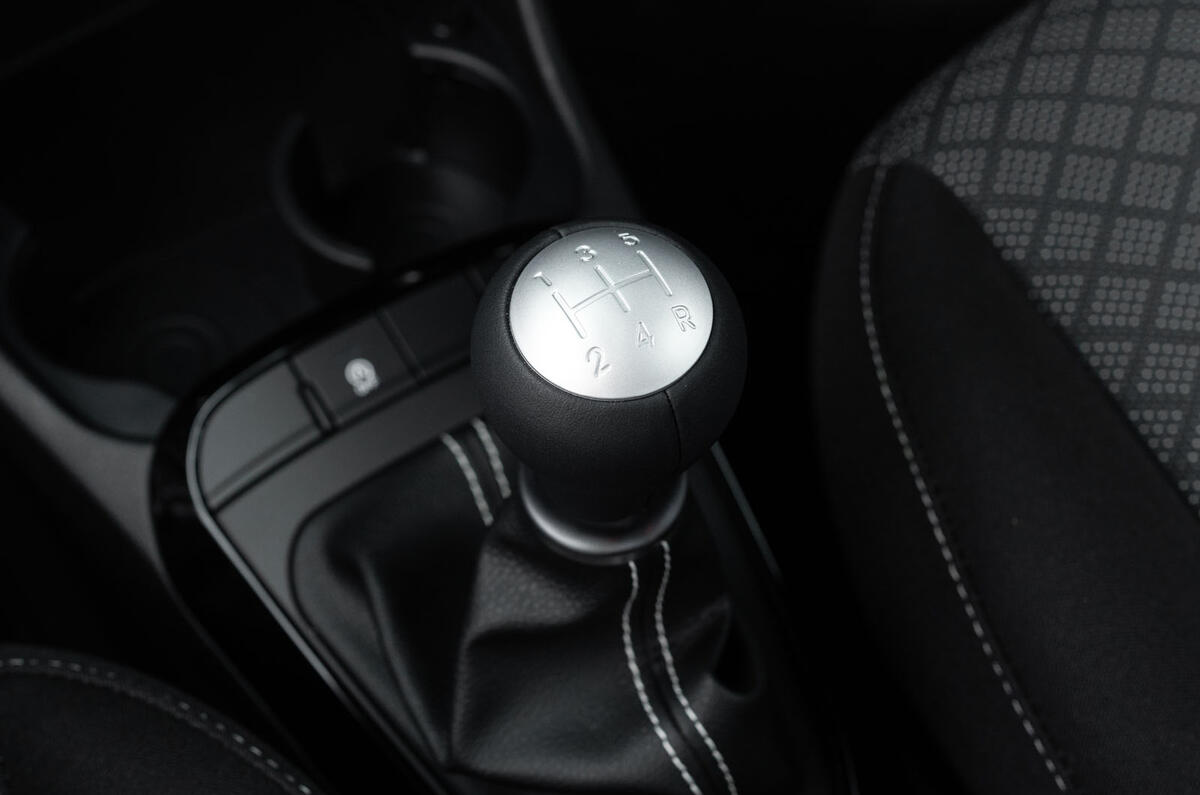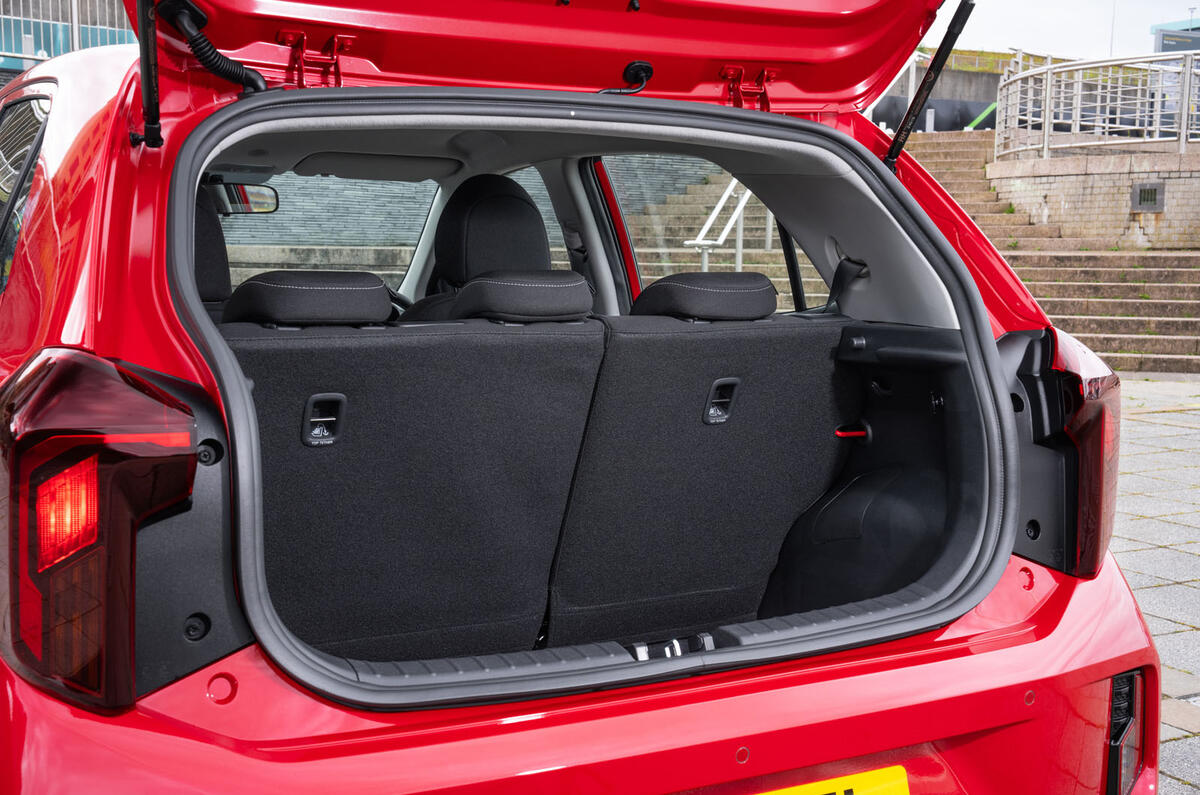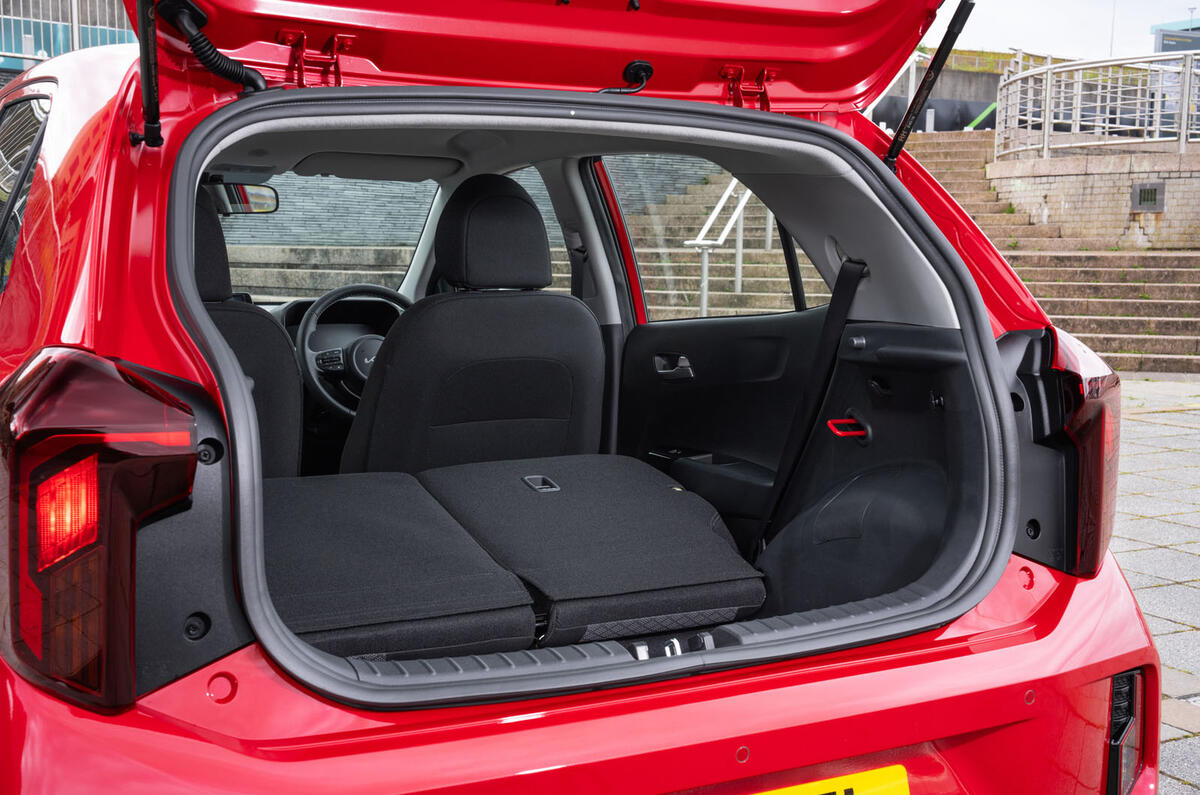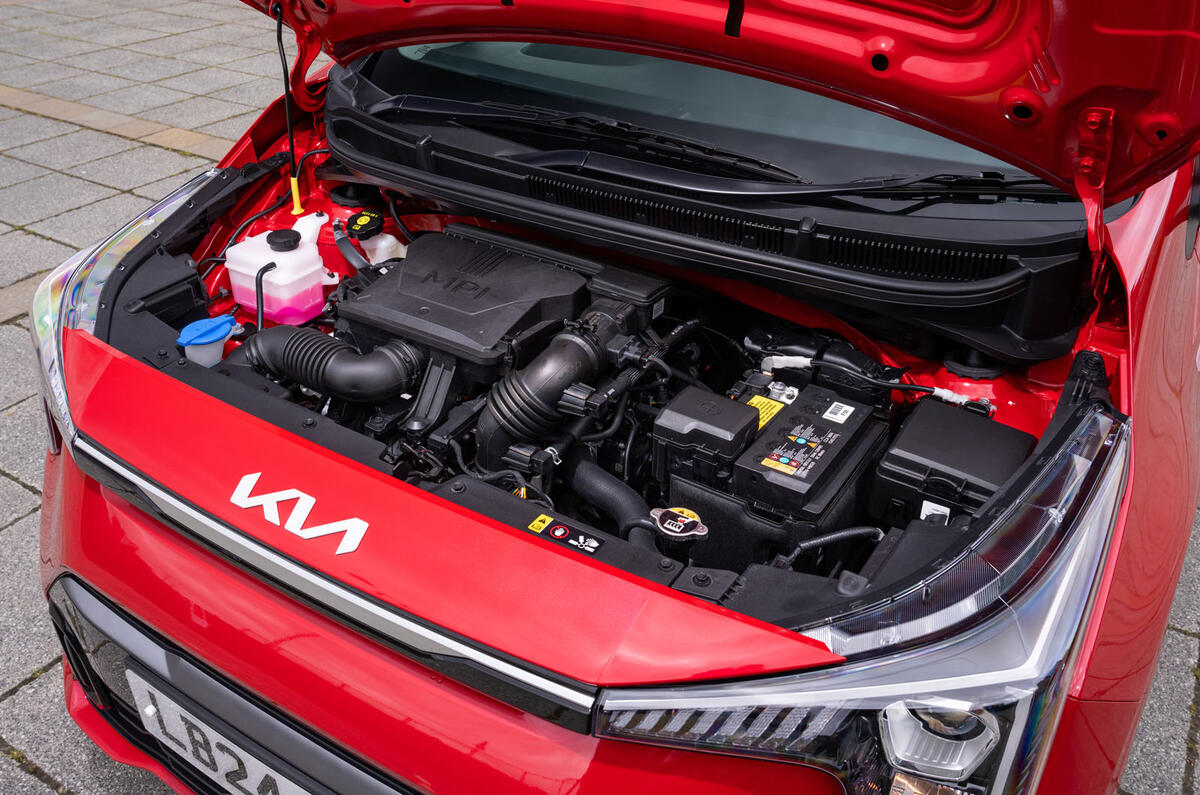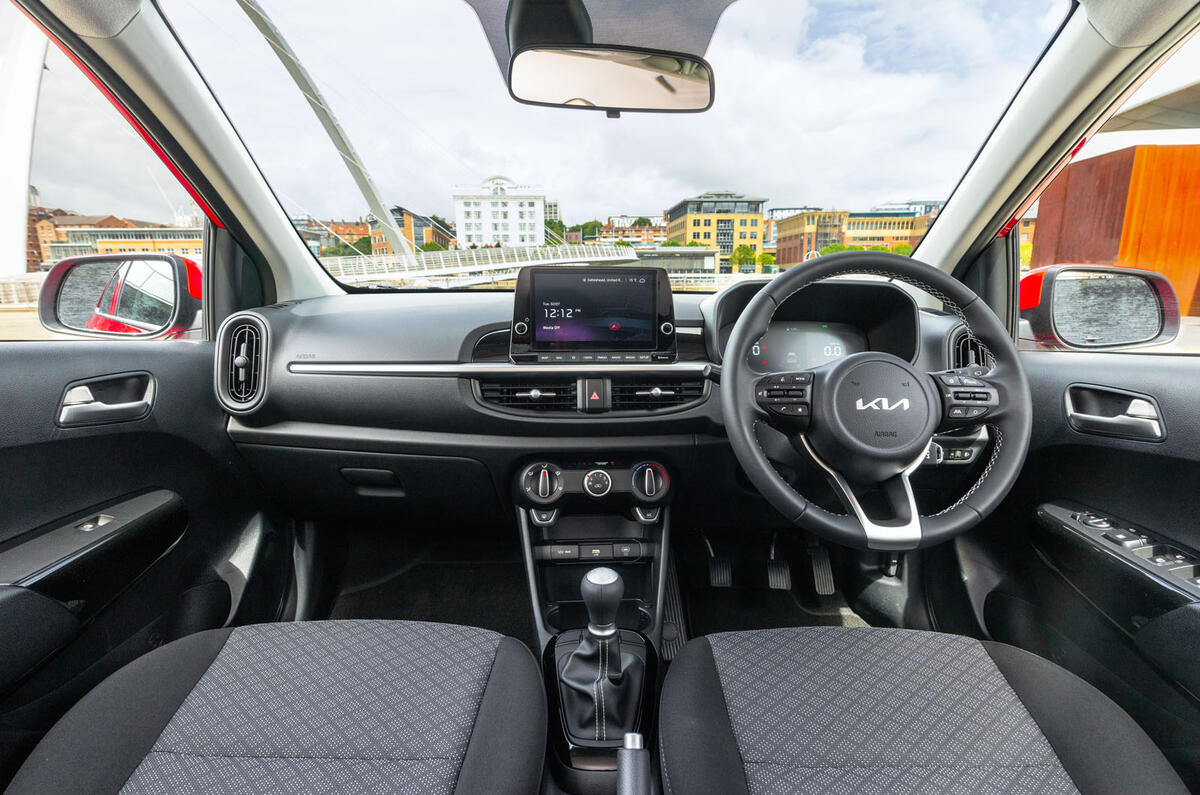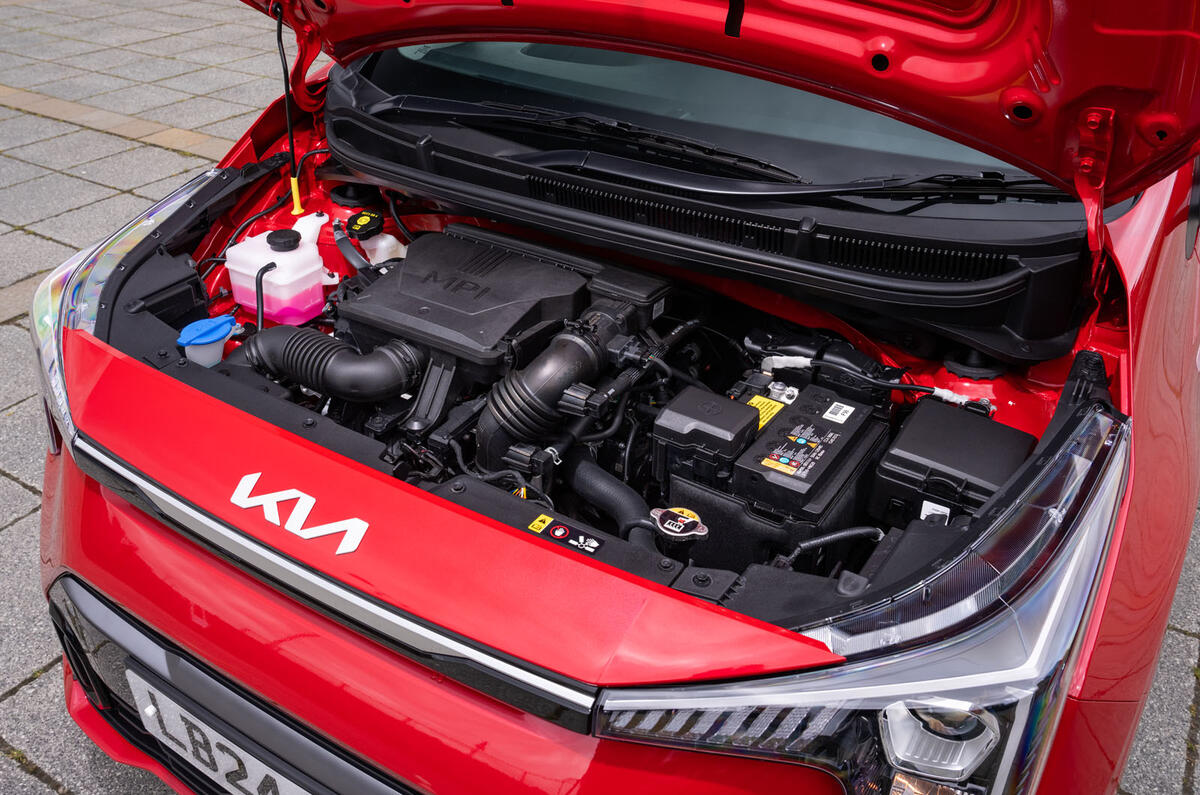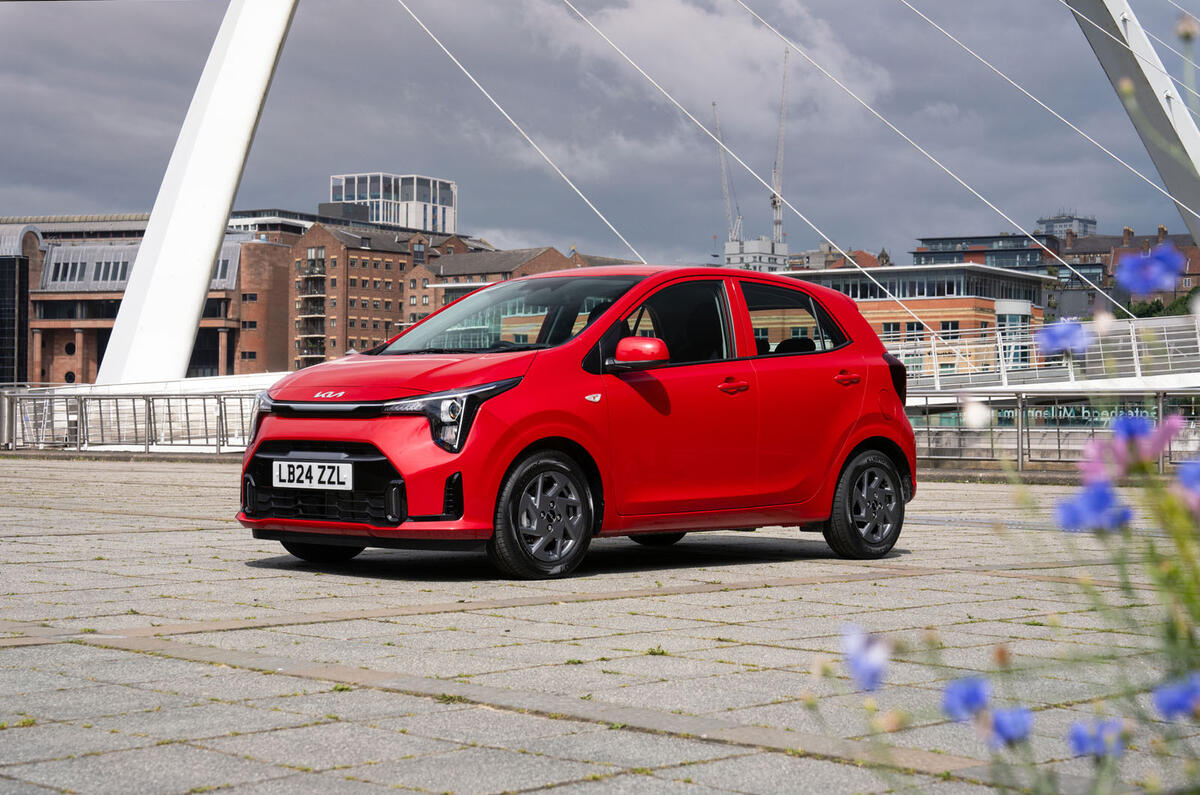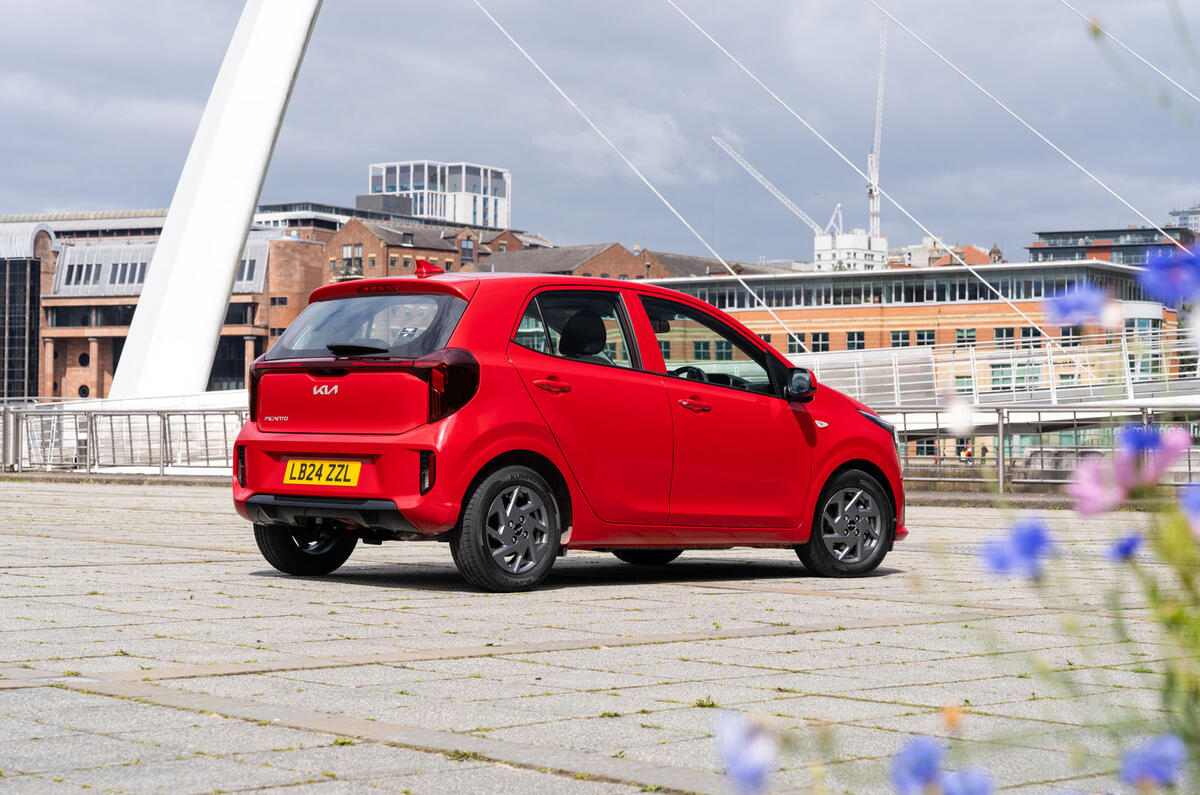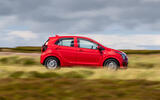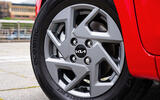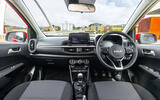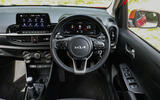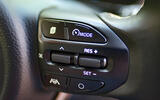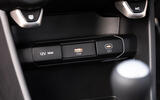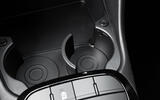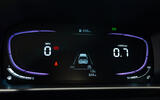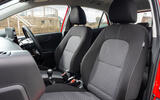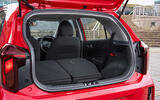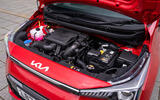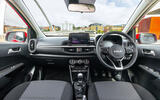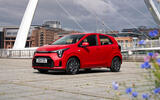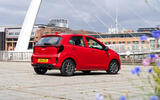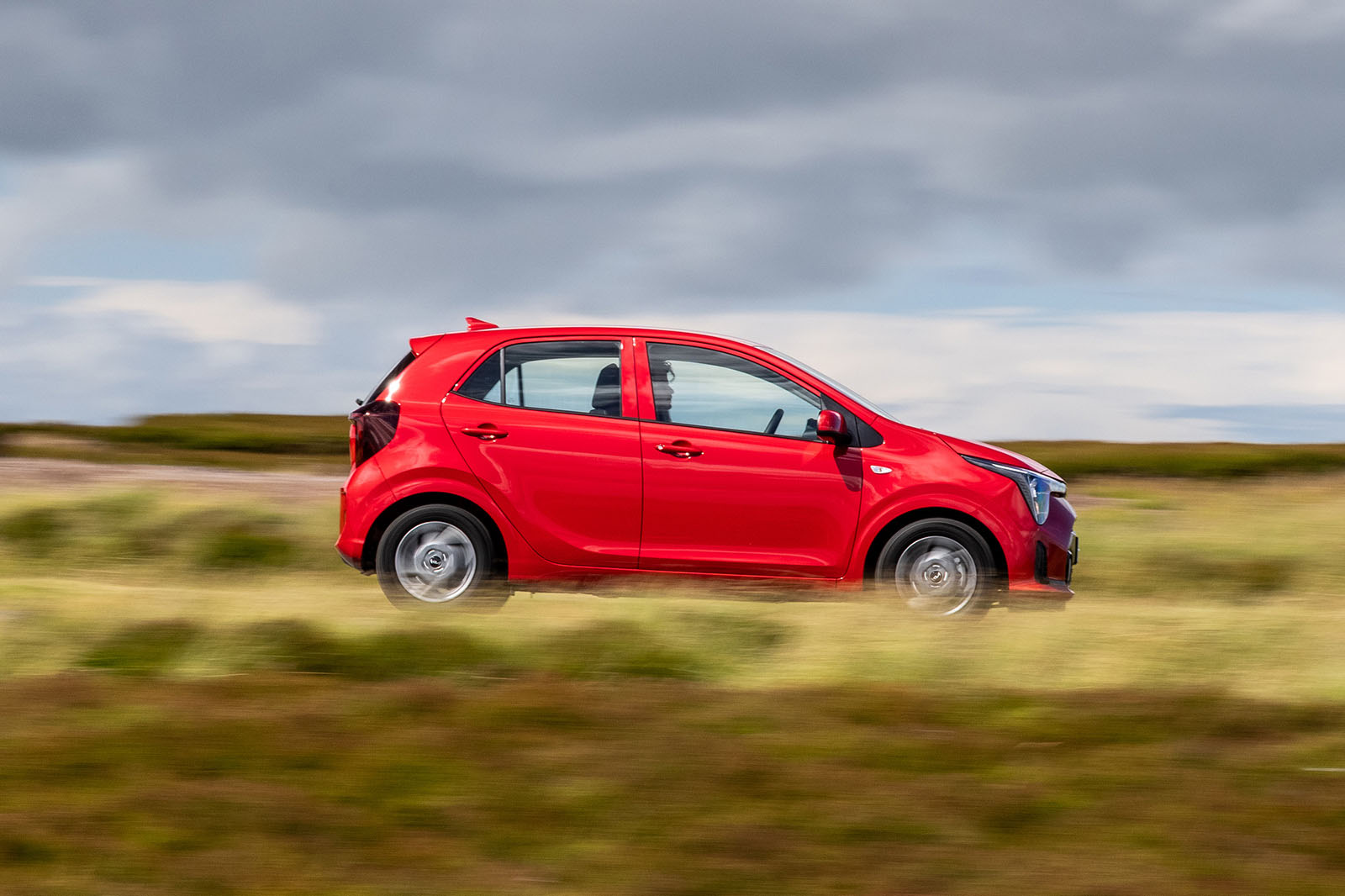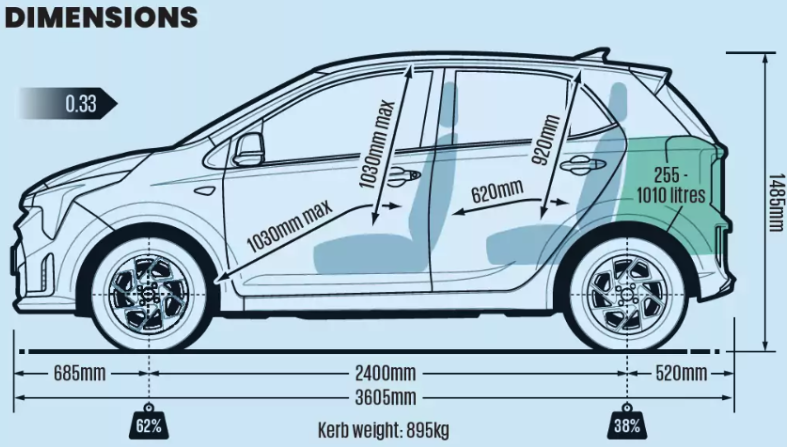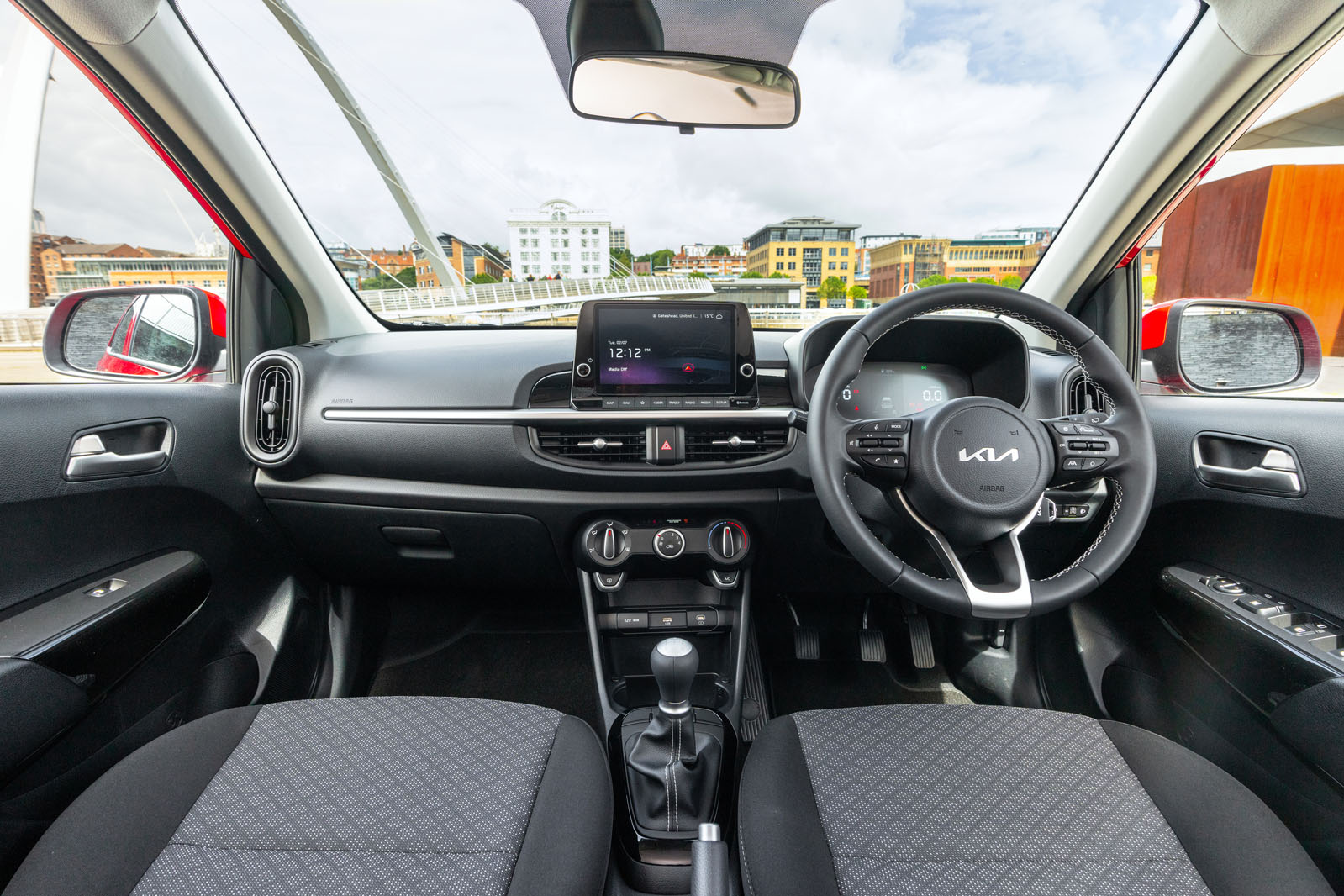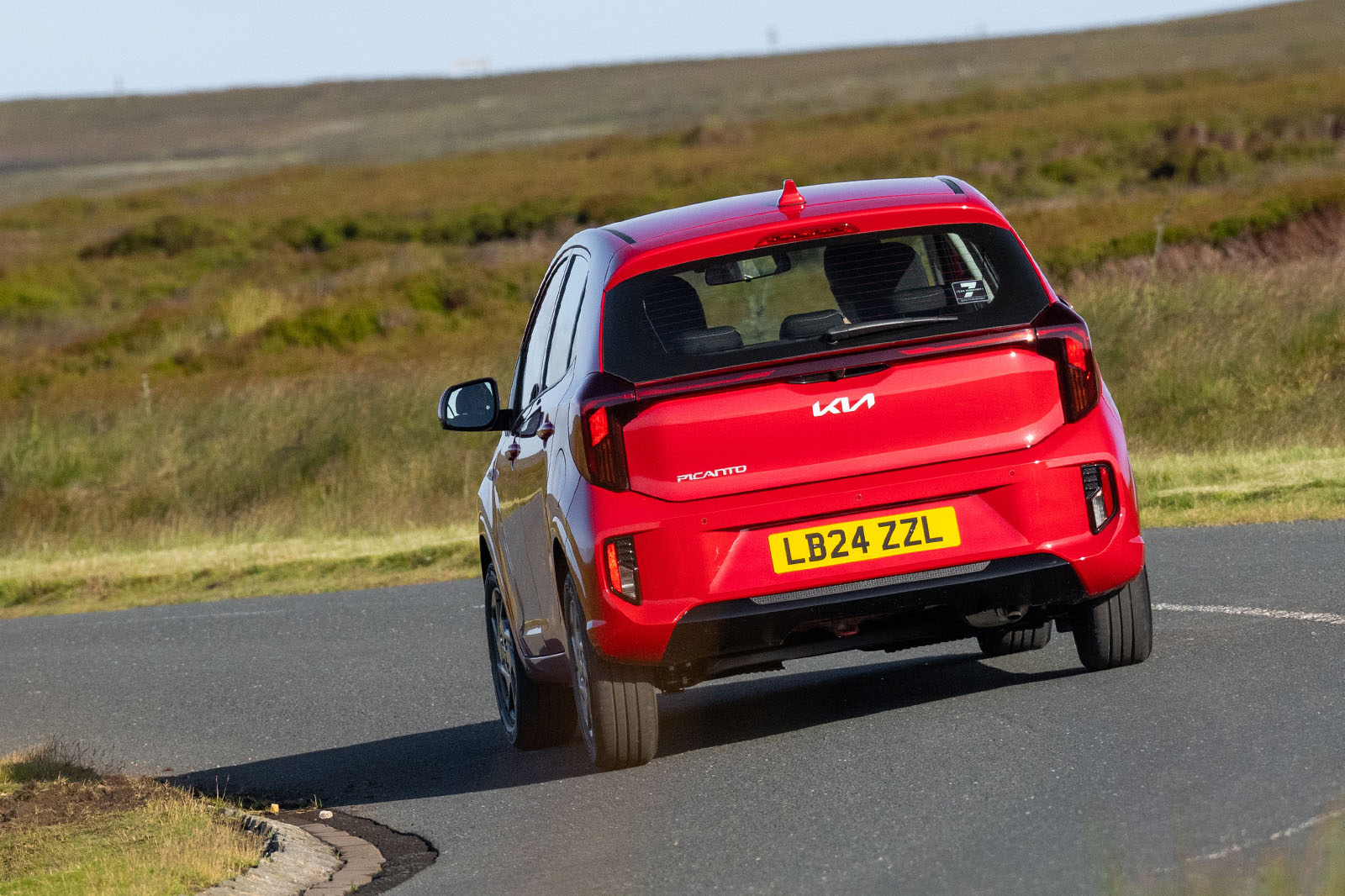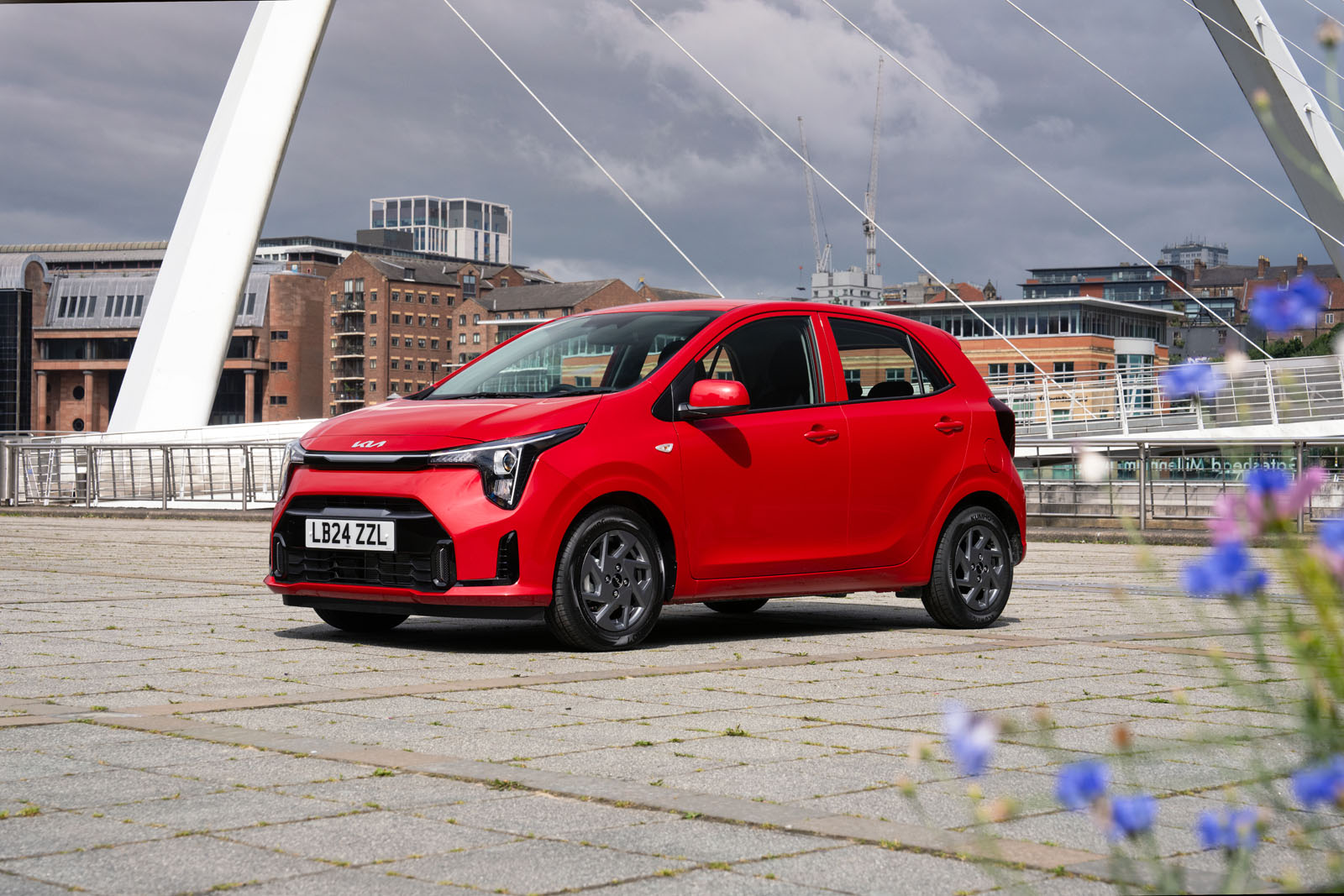Kia, if you didn’t know, does good interiors. They tend to feel solid and logically laid out. What’s more, they are spacious, especially where Kia’s fine electric models are concerned.
The Picanto is no different. This is a surprisingly mature cabin; not as playful as that of the Toyota Aygo X or as elegant as that of the recently retired VW Up, but neatly wrought and more premium than expected given the asking price of our entry-level 2 test car.
‘Premium’ is, of course, a relative concept. The Picanto still sports plenty of fairly cheap-feeling plastic, though it is sturdy to the touch, and the artificial leather used to upholster the gearknob and steering wheel contributes to the sense that, yes, you’re driving an economically built car, but not one that has been relentlessly pared back to forcibly drive down costs.
The switchgear for the HVAC is manifestly old-fashioned but is all the better for it. Want cooler air? Twist the big dial. Want a stronger flow of air? Twist another big dial.
There’s also a row of shortcuts beneath the central touchscreen, and a phone call button on the steering wheel – something that even VW, once masters of the rationally laid-out cabin, has now dispensed with. This is a small but very intuitive cockpit, with plenty of light allowed to enter in.
Alas, it’s not an enormously comfortable cockpit. The seats are firm, not especially adjustable or supportive, and that supermini-typical lack of reach adjustment in the steering column forces taller drivers to adopt a long-of-leg, long-of-arm posture that becomes tiring. We’re also not so keen on Kia’s decision to ditch the pre-facelift car’s analogue instruments for a fairly nondescript digital display.
The Picanto does at least maximise what space the floorpan permits, both in terms of physical space and the perception of it. The dashboard is bookended by vertical vents that make the cabin feel wider than it is, while the large glasshouse and glut of head room ensure the Picanto isn’t remotely claustrophobic inside.
Admittedly, leg room is tight for adults and those up front should expect some knee-powered lumbar support. There’s no shortage of head room, mind.
The 255-litre boot is usefully deep, but the Aygo X and Dacia Sandero have longer seats-down load bays.
Infotainment and multimedia
A touchscreen used to be fitted on only higher trims, with cheaper versions getting a fairly simple radio head unit with a few buttons and a segmented display. From 2024, all Picantos feature an 8.0in touchscreen. It runs an older version of Kia’s software yet works logically enough and even includes built-in navigation.
The standard audio system is nothing special but better than you might expect in an entry-level car. Apple CarPlay and Android Auto both require a USB-A connection.


